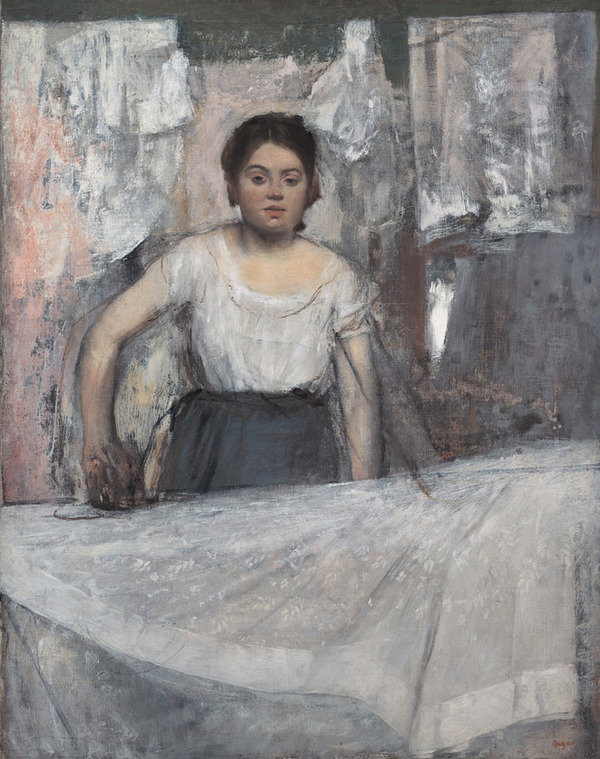Changing perspectives
dal 14/4/2013 al 30/8/2013
Segnalato da
Max Beckmann
Pablo Picasso
Paul Cezanne
Edgar Degas
Caspar David Friedrich
Paul Klee
Arnold Bocklin
Max Ernst
Vincent van Gogh
Alexej von Jawlensky
Emil Nolde
Paul Gauguin
Ernst Ludwig Kirchner
Wilhelm Lehmbruck
Franz Marc
Oliver Kase
Annabel Zettel
14/4/2013
Changing perspectives
Neue Pinakothek, Munich
Degas-Picasso | Gauguin-Nolde | Monet-Macke. The world-renowned masterpieces of modern art from the collection of the Pinakothek der Moderne - from Max Beckmann to Pablo Picasso - will be brought face to face with outstanding forerunners of modernism, such as Paul Cezanne and Edgar Degas from the Neue Pinakothek. Ten galleries in the Neue Pinakothek are being newly installed, where close to 50 masterpieces of modernism will be brought into dialogue with the masters of the 19th century.

curated by Oliver Kase, Annabel Zettel
Beginning in mid-April, the Pinakothek der Moderne will be making a one-
off guest appearance at the Neue Pinakothek, casting new light on the
history of the avant-garde around 1900.
The two unique collections of 19th and early 20th-century art will be united
in one place, temporarily lifting the boundaries between the Pinakotheks’
collections. The world-renowned masterpieces of modern art from the
collection of the Pinakothek der Moderne – from Max Beckmann to Pablo
Picasso – will be brought face to face with outstanding forerunners of
modernism, such as Paul Cézanne and Edgar Degas from the Neue
Pinakothek. These unexpected encounters will retrace and re-enact the rise
of modernism through a series of direct dialogues between its masterworks.
These encounters will open up broad vistas in time that reveal the enduring
traditions and innovative disjunctures in art at the turn of the 20th century.
This exchange of views between the collections allows for a variety of
encounters among artists and schools of painting that stand in intellectual
or direct affinity to one another. Ten galleries in the Neue Pinakothek are
being newly installed, where close to 50 masterpieces of modernism will be
brought into dialogue with the masters of the 19th century.
The presentation begins around 1800 with Romantic painting, locating the
roots of the modern in C.D. Friedrich’s radical new approach to landscape
painting. The Romantic legacy of his motifs and world of ideas becomes
apparent in juxtaposition with the poetic, cosmic, and magical works of Paul
Klee.
At the turn of the century, the presentation links the work of Arnold Böcklin
to Max Ernst. Equally a descendant of Romanticism and a Surrealist avant la
lettre, Böcklin used his paintings and their new perspective on ancient
mythology to penetrate the depths of the psyche. In Max Ernst’s work,
mythical figures are transformed into raging »angels of the hearth« and
unleashed »brides of the wind«, while ominous forest or jungle landscapes
conjure up Surrealistic visions of the animalistic and the repressed.
1The years around 1900, with their great artistic revolutions on the cusp of
modernity, lie at the heart of the dialogue between the works from both
Pinakothek collections. The show elucidates the seminal aesthetic
experience that German Expressionists described in their encounters with
the »fathers of modernism«. The impasto of paint, vibrant brushstrokes, and
luminous colour in the work of Vincent van Gogh are shown as
unprecedented examples for artists such as Alexej von Jawlensky and Emil
Nolde. Equally crucial for the Expressionists was Paul Gauguin, whose
paintings of Polynesia also made him a prophet of modern art. Depicting a
celebratory harmony between man and nature, Gauguin conjured up a world
of exotic naïveté and purity.
The collections’ presentation concludes with the catastrophe of the First
World War, which brought about an abrupt end to the artistic utopias of the
early 20th century and the burgeoning development of the avant-garde.
Major works from between 1914 and 1918 by Ernst Ludwig Kirchner,
Wilhelm Lehmbruck, and Franz Marc offer individual and disparate views on
events of the war. This final dialogue extends the cut-off point of the Neue
Pinakothek’s collection from 1900 to 1918, in anticipation of the hundred-
year anniversary of the First World War in 2014.
Image: Edgar Degas (1834 - 1917), Woman ironing, c. 1869 © Bayerische Staatsgemäldesammlungen, Neue Pinakothek München
Further information and images may be obtained either by phone: +49 (0)89
23805-286 or by e-mail: presse@pinakothek.de
Press Dept. at the Pinakothek Museums
Tine Nehler M.A.
Leitung Presse & Kommunikation | Head of the Press Department
Pinakotheken im Kunstareal | Bayerische Staatsgemäldesammlungen
Kunstareal | Barer Strasse 29 | 80799 Munich
tel: + 49 (0)89 23805-286 | fax: + 49 89 23805-125
e-mail: presse@pinakothek.de
Press preview: 15.04.2013, 10.00 am
Opening reception: 17.04.2013, 6.00−10.00 pm
Neue Pinakothek
Barer Strasse 29 | 80799 Munich
OPENING HOURS
Daily except TUE 10.00 a.m. - 6.00 p.m.
WED 10.00 a.m. - 8.00 p.m.
Opening hours on public holidays
Opened: New Year (Jan. 1), Twelfth Day (Jan. 6), Good Friday, Easter Sunday, Easter Monday, Ascension Day, Whitsunday, Whitmonday, Feast of Corpus Christi, Assumption Day (Aug. 15), National holiday (Oct. 3), All Saints’ Day (Nov. 1), 2. Christmas Day (Dec. 26)
Closed: Shrove Tuesday, May Day (May 1), Christmas Eve (Dec. 24), 1.Christmas Day (Dec. 25), New Years’ Eve (Dec. 31)
ADMISSION
Permanent exhibition
7 euros | reduced 5 euros
Sunday admission 1 euro
Combined Ticket
Permanent exhibition and special exhibition
10euros | reduced 8 euros
Special exhibitions not included.
Day Pass 12 euros (for the two Pinakothek museums, Museum Brandhorst, Sammlung Schack)
5-visit pass 29 euros (for the two Pinakothek museums, Museum Brandhorst, Sammlung Schack)
Free admission is granted to School classes, pre-schoolers, after-school children's groups, youth groups from the EU member states when accompanied by teaching or supervisory staff.
Prices subject to change.



